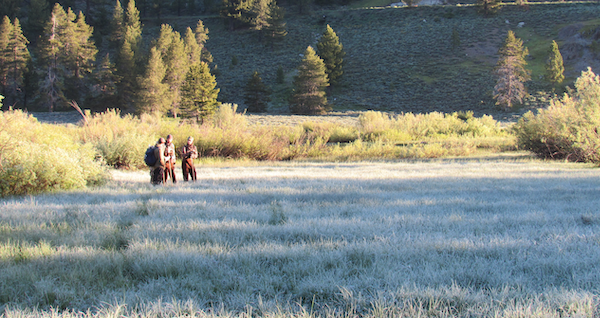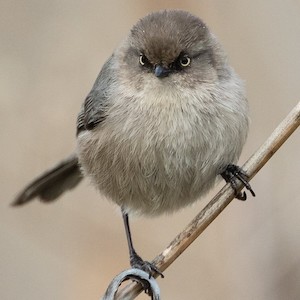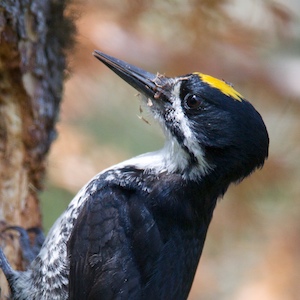Montane meadows are kind of magical places. These wet oases in the Sierra Nevada mountains help control downstream floods, improve water quality, and are hotspots of biodiversity. Their lush vegetation, profuse flowers and abundant insect life draw wildlife ranging from black bears, to birds, to bumble bees.
But montane meadows also attract humans, and because of that, the majority of meadows in the Sierras have been degraded. Over a century of grazing, logging, mining, road construction, dams and water diversions have taken their toll. Many meadows have dried out and their plant communities are changing as sagebrush and conifers encroach.
Today many groups, including federal agencies, private landowners, and conservation organizations, are working to restore meadows in the Sierra, and IBP's science is helping to make that restoration effective.
Our work monitoring meadow birds and studying their habitat needs is allowing land managers to prioritize sites for restoration, evaluate restoration efforts, and design more effective restoration projects going forward.
But what can birds tell you about meadow restoration? Birds are near the top of the food chain which makes them good indicators of ecosystem function. They require certain vegetation structure for nesting and cover and depend on clean and abundant water to produce the insects they feed on. And monitoring birds is cost-effective, says IBP's meadow bird specialist Helen Loffland. Counting birds by sight and sound is less labor intensive than sampling aquatic invertebrates and identifying them under a microscope in a lab, for instance. Plus, in many cases conserving birds like the Willow Flycatcher, a California endangered species, has been the impetus for meadow restoration.

A Willow Flycatcher. Photo by Chandler Dolan
Loffland has been working in Sierra meadows for 25 years, first as a US Forest Service employee and later spear-heading and co-managing a 14 year demographic study on Willow Flycatchers with researchers from CSU Sacramento, Texas A&M, and UN Reno. IBP too has a long history working in meadows beginning in the late 1980s when we established the first MAPS bird banding station at Hodgdon Meadow - a nearly pristine montane meadow with super-abundant birdlife - in Yosemite National Park. "It was a natural outgrowth of that work to look at other meadows throughout the Sierra Nevada that were not as well protected, or in as good condition, as Hodgdon and to seek ways of improving habitat and/or safeguarding the meadow birds that depend on them," says Rodney Siegel, IBP's executive director.
Other conservation groups in the region agreed, and in 2010, the National Fish and Wildlife Foundation began a meadow restoration initiative in the Sierra. "With so many diverse restoration projects moving forward across the region, we saw a need for a monitoring framework that would knit them all together and yield insights into which actions are and are not successful at maintaining or restoring meadow bird populations," says Siegel, "We received a grant from the National Fish and Wildlife Foundation to develop and begin to implement a standardized protocol for assessing the effects of meadow restoration efforts on birds."
That protocol has subsequently been used to monitor birds in dozens of meadows in the Sierra Nevada region. IBP's continued close relationship with many of the organizations working in meadow restoration allow us to continue monitoring to see if restoration is paying off for birds- and in many cases it is.
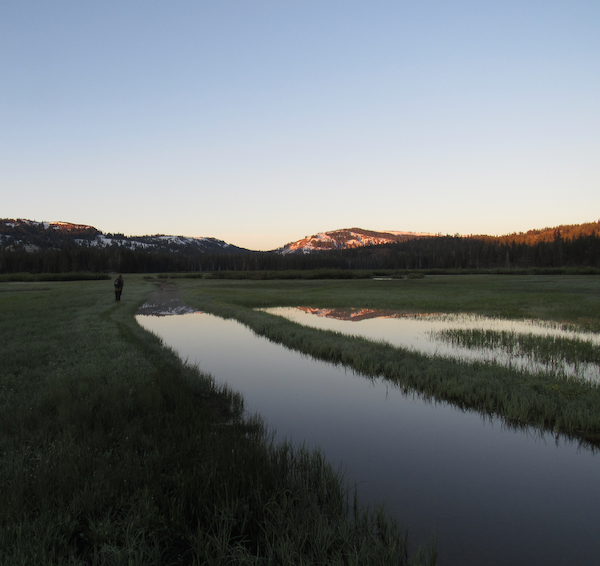
Rodney Siegel sets out early to do point counts as part of IBP's meadow bird monitoring work.
Loffland points to some of the restoration work done in the little Truckee River meadow system, "what we are seeing there is that the big meadow systems that haven't been restored have lost all their Willow Flycatchers. And we know from our demography studies that there were five or six or more Willow Flycatcher breeding territories in each of these large meadows during the 90s and early 2000s," she says. "And the only places in that Little Truckee system that are still maintaining Willow Flycatchers are those restored meadows."
IBP expertise has helped improve the design of restoration projects to maximize their benefits to birds. In one recent example, Loffland provided on-the-ground input on a restoration project in Hope Valley, south of Lake Tahoe in Alpine County. "I actually went in the field with the engineers and talked about what was possible and what we were trying to get for birds," says Loffland. Working within the parameters of the project she was able to make specific recommendations, such as adding an ox-bow and willow plantings, that were incorporated into the design. She is now providing similar on-the-ground advice to engineers on a planned restoration project in nearby Faith Valley.
IBP is also developing new tools to maximize the benefit of meadow restoration for birds. We have worked with the Sierra Meadows Partnership on a prioritization tool to help land managers decide which meadows to restore based on a variety of parameters including bird habitat needs. IBP biologist Lynn Schofield is currently working on a related prioritization tool that is focused on Willow Flycatchers, which will identify and prioritize for restoration the meadows that are most important to this declining species. IBP is also working with the California Department of Fish and Wildlife to finalize a conservation strategy for Willow Flycatchers in California.
Creating good habitat is sometimes not enough. One of the cues that many birds use to identify suitable breeding habitat is conspecific song– if other members of their species are singing and breeding in this patch, it must be good. Many restored, or even naturally suitable, meadows may fail to be recolonized by Willow Flycatchers because there aren't any Willow Flycatchers singing in them when prospecting birds are looking for a breeding territory. IBP experimentally tested the use of conspecific playback to attract Willow Flycatcher to restored meadows and found that the birds were 7 times more likely to settle in unoccupied meadows where Willow Flycatcher song was broadcast compared to meadows where no song was played. Careful use of conspecific playback could aid in attracting Willow Flycatchers to restored habitat and building the population. This method is starting to be used in restoration projects.
Montane meadows comprise some of the most precious and threatened habitat in Sierra Nevada region. Restoration of meadows requires the expertise and coordination of hydrologists, biologists, public and private land managers, and conservation organizations. The wealth of experience, data and scientific analysis that IBP brings to this process is helping to ensure that restoration efforts are properly targeted and maximally effective to benefit bird populations and the Sierra Nevada ecosystem as a whole.
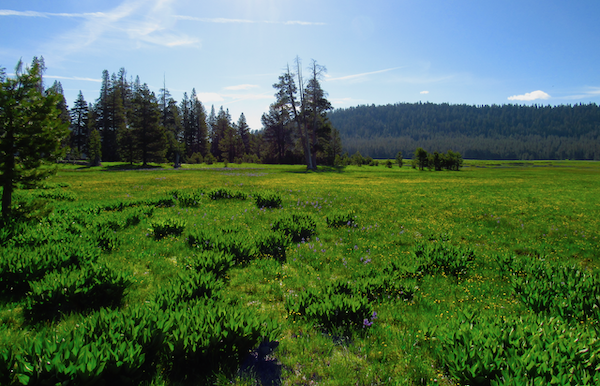
Lacey Meadow in Tahoe National Forest


